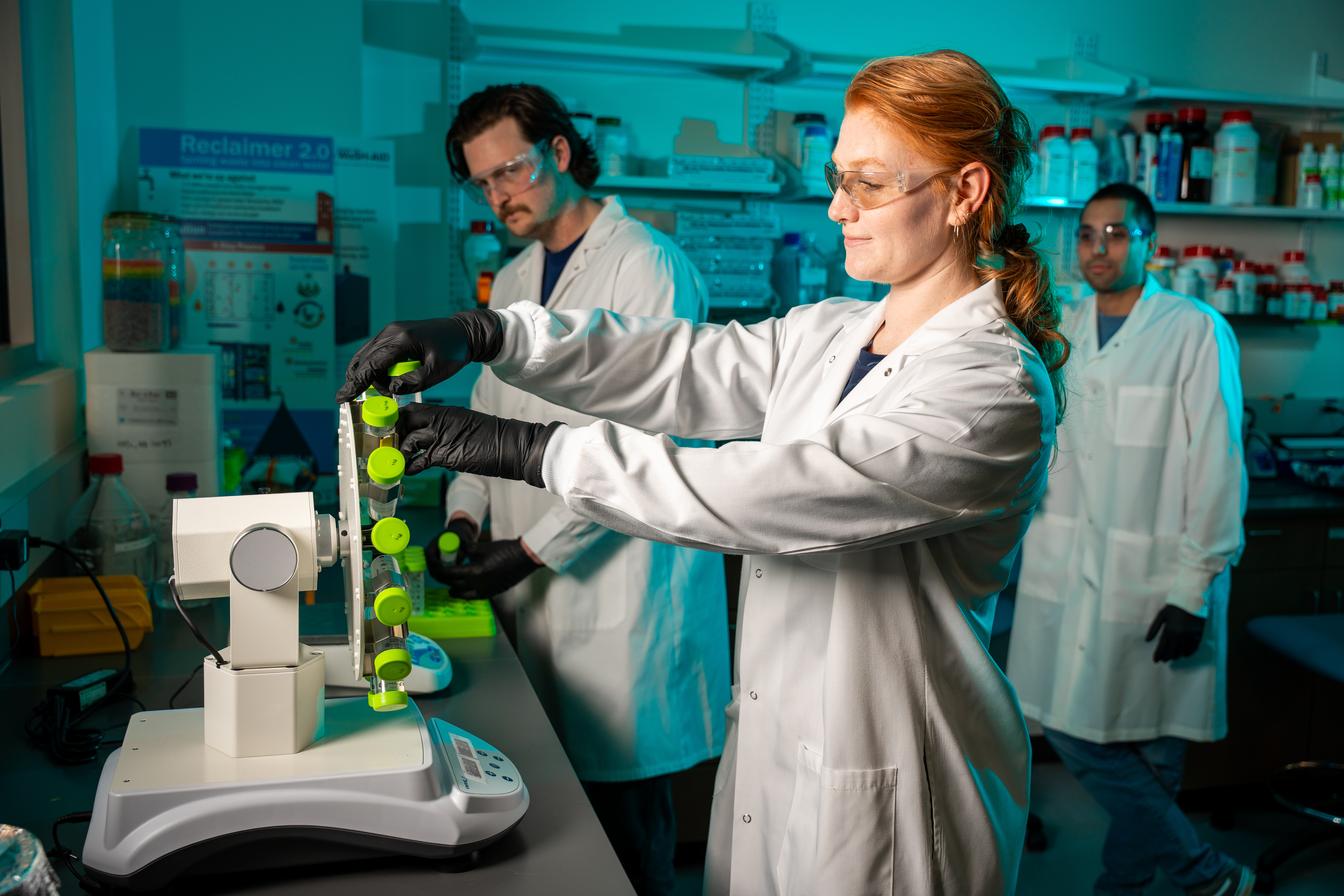In honor of Women's History Month, Duke celebrates the researchers whose inventions are destined to improve lives.
Imagine a giant Brita filter capable of attracting and absorbing contaminants from drinking water, wastewater, stormwater or other water sources.
That's what research faculty Julia Darcy and her team at Duke's Center for Water, Sanitation, Hygiene and Infectious Disease (WaSH-AID) , spend their days working to develop. Such technology would allow appropriate reuse of this water and help resolve growing water scarcity issues around the globe.
"My group and I ask how we can design novel materials to meet needs in water treatment that aren't currently being addressed," Darcy says.
The jargon for the materials that she works with is "sorbents," materials that attract certain pollutants to them. One of the challenges is that not all contaminants are created equally.
"There's no blanket solution. So as wastewater gets more complicated, we're trying to understand how we could design more complicated sorbents to meet current needs." Darcy says.
"My group and I ask how we can design novel materials to meet needs in water treatment that aren't currently being addressed."
Julia Darcy
WaSH-AID initially was funded by the Bill & Melinda Gates Foundation and relies mostly on external funding such as grants to support the lab and salaries.

Darcy is working on two main projects - one relating to stormwater run-off, which contains contaminants such as nutrients, pesticides, oil and bacteria that can harm both humans and aquatic life when it gets into our drinking water, rivers, streams and oceans.
The other focuses on per- and polyfluoroalkyl substances - known as PFAS or "forever chemicals," which increasingly are being found in water, fish and even the human brain.
These chemicals are used to make many everyday consumer products, including cookware, clothing and cosmetics. Many PFAS are associated with health problems.
"These are tricky problems to solve, so we have to be innovative when we're trying to design new materials to think of what will be the most effective strategy," she says.
Darcy has disclosed multiple inventions based on this research to the Duke's Office for Translation & Commercialization , which is helping bring her technologies out of the lab and into the real world.
Darcy and her team are now looking to "tweak" those sorbents they have already developed for different uses. For example, tweaking one they created to treat stormwater for use to treat blackwater, which is wastewater from toilets.
"So far, we have some promising data there," she says. "It's cool to be able to be creative and make new materials and then have such a wide space to ask, does this fit anywhere, and can it add value in some water treatment space that we haven't tried before?"






